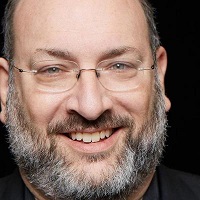 By David Harlow, JD MPH, Principal, The Harlow Group LLC
By David Harlow, JD MPH, Principal, The Harlow Group LLC
Twitter: @healthblawg
Host: Harlow on Healthcare
Hashtag: #HarlowOnHC
At HIMSS 2018, I spoke with Mitchell Goldburgh, Global Solutions Manager, Enterprise Imaging and Analytics Solutions, NTT Data Services. (Twitter: @twitchell) He observed that one of the key challenges the healthcare system is struggling with is the adoption of new technology needed to address population health, both on the diagnostic end and on the care management end.
We spoke about how NTT is addressing this challenge with automation tools, leveraging interoperability, gathering clinical and other data (from activity trackers and other IoT devices) in order to deliver information at the point of care and to those managing care: payers, providers and others. NTT has been managing clinical imaging data for over 17 years, in radiology, cardiology, oncology, and now dermatology and pathology as well, and is now combining those data with automation tools to enable payers and providers to lower costs, improve care and move us in the direction of value-based care.
“Machine learning using neural networks that does segmentation and then quantification” trains algorithms that can contribute to productivity and improve population health by identifying conditions that may not otherwise be detected, that may be asymptomatic – by reporting from radiologist to PCP, leading to cost savings through referral of patients to preventive services and health maintenance programs. These automation tools also allow for the prioritization of criticl cases in the radiologist’s workflow (e.g. a brain bleed should be read right away).
One argument in favor of AI is that AI is more consistent than humans – and that consistency can be tuned by humans so that alerts and information coming from the automation tools to the clinicians does not result in non-meaningful data overload. Mitchell said: “It’s a matter of time and judgment that will prevent automation from being robotic medicine.” Human judgment will always be the last step, injecting human judgment into the process.
Other uses of automation in NTT’s toolbox include:
- Coding optimization, using data about patients to help payors better understand their patient populations and stratify risk (and manage budgets) and better reimburse providers for services they are providing
- Resource scheduling for patients based on patient-determined parameters (e.g. copay, distance, gender of provider or tech)
- Extracting data from NLP in order to gain better insights and enable better patient engagement through portals and telemedicine
Overall, Mitchell describes NTT’s approach as an integrator of solutions: “We’re a company that finds problems and then finds products that solve that problem.”
A discussion of ROI of health IT led Mitchell to musing about the proliferation of EHRs leading to higher-paid professionals clicking around on computer screens, and to the potential frustration with one click leading to the need to click through numerous sub-menus. Some clinicians don’t want to spend the time, don’t want to get sucked into that cascade, so instead they enter free text – and therefore some patient data is then lost to analytics, to automation. We then quickly veered into philosophical territory, with Mitchell naming “the tyranny of automation” as a subset of “the tyranny of convenience.” In healthcare, the tyranny of automation is that it encourages us to become reliant on it and that it creates opportunities for oversensitivity to detection of disease, increased treatment … we tend to fill the void created by the automation.
Mitchell’s vision for five years in the future – for one thing he hopes or expects to be different – centers on patient access to information needed in order to determine how best to manage care, in order to find the best clinician for even the most specific rare condition. “I want to be able to easily learn who has the most experience” dealing with a rare disease ”in order to get the best advice. I want something objective …. There is some data there, just not accessible to the patient.”
Stay tuned for the future unlocking of this and other healthcare data.
This article was originally published on HealthBlawg and is republished here with permission.
